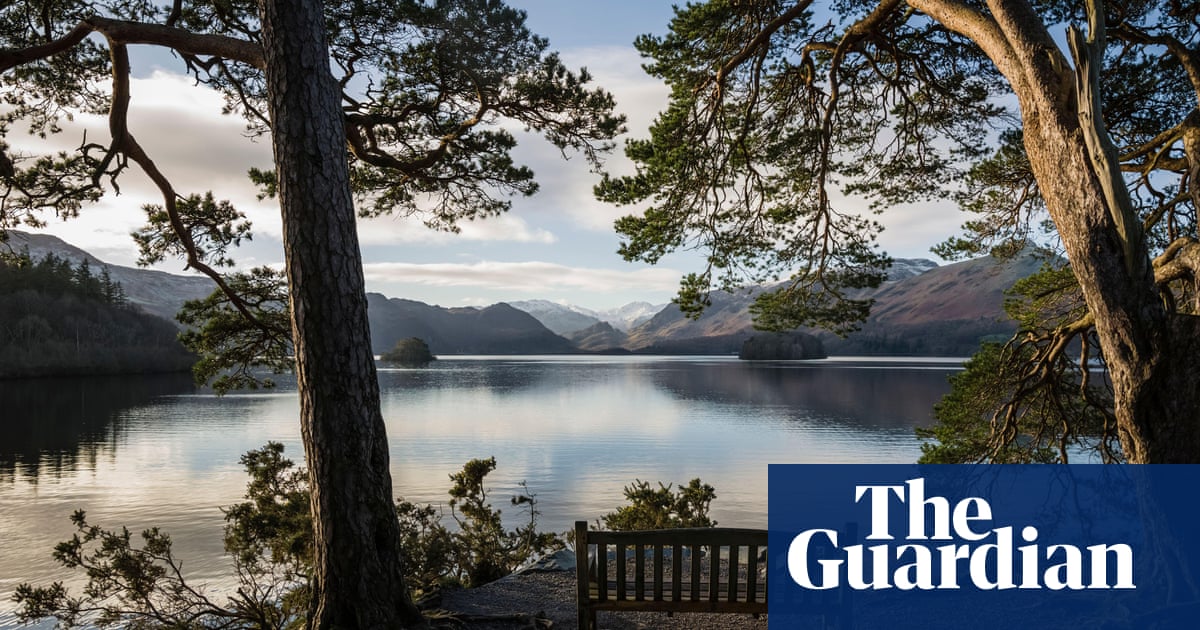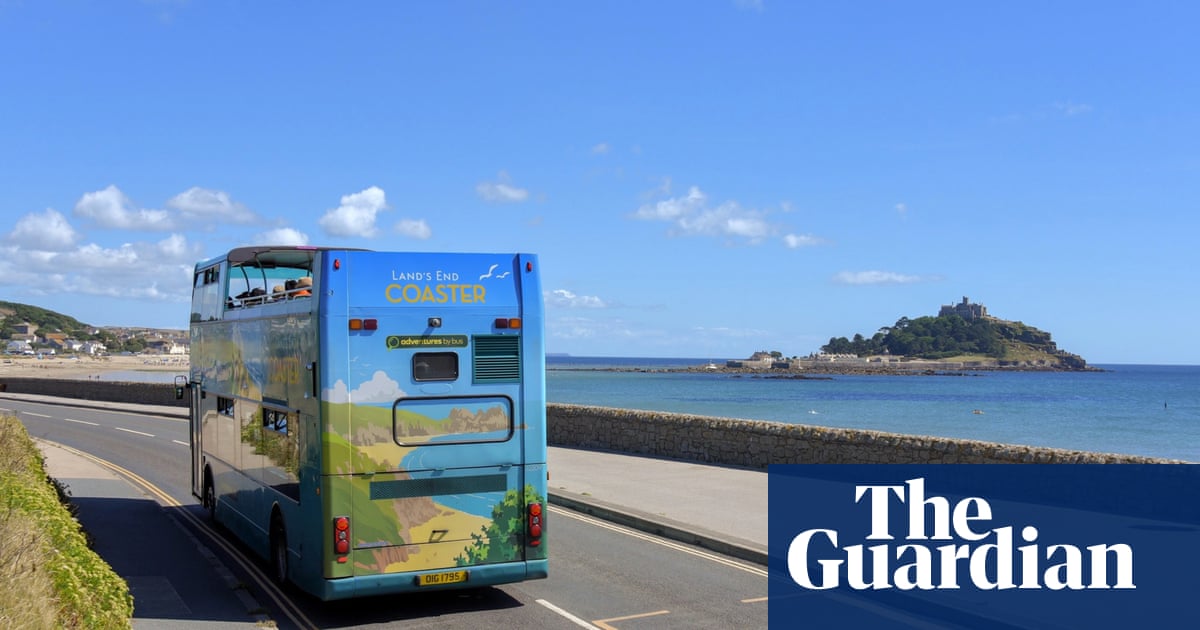
Every winter, thousands of grey seals give birth on the beaches near Winterton-on-Sea. By late November this year, the Friends of Horsey Seals had already counted 1,172 pups, with many more on the way. The Friends have looked after the growing colony since 2012, to make sure visitors can watch safely without disturbing the wildlife. I’m alarmed that one fluffy white pup seems to be bleeding, until a warden points out the red streak is the umbilical cord. The scene in front of me, teeming with life, is one of Britain’s great natural spectacles.
Winterton-on-Sea is a 45-minute ride on Coastal Clipper bus 1 from Great Yarmouth, which has smart, hourly trains through the marshy Broads from Norwich. I’ve spent much of the past decade exploring East Anglia and thought I knew what to expect from a minibreak on the coast near Yarmouth. Turns out there’s plenty I don’t know: about lichen, about the circus, and seals. I talk to several seal wardens, all devoted, knowledgable, and keen to emphasise that people should keep off the beach. A raised flipper, which looks like a cheerful wave, actually means stay away.
I’m sleeping in an old red-brick barn at Mill Farm, which is 15 minutes’ walk from the beach. There are four big bedrooms round an even bigger living room with sofas, TV, log-burning stove and piles of boardgames. There’s a separate games barn with pool and ping pong tables. And several green features, from a biomass boiler to a guest allotment. The welcome hamper includes juice from the farm’s apples. Environmentalists Emma and Neil Punchard, who converted this Eco Barn, have created an orchard, wildlife pond and butterfly-magnet paddocks around it, and planted 1,800 native hedgerow shrubs to line the permissive path that keeps walkers safely off the road from the village and nearby bus stop. In April, they’re opening a new Grain Barn that sleeps four.
The pink-footed geese first fly over while I’m having breakfast the next day. Their calls alert me, and I run to the door to see a classic spear-shaped line of geese. Attracted to Norfolk partly by sugar beet tops left in the fields after harvesting, overwintering pink-foots have become a local phenomenon. The nearby Berney Marshes sees as many as 15,000 of them gathering between October and March each year, migrating from their summer breeding grounds in Iceland and Greenland.
One of the area’s most interesting car-free trips is to these remote, roadless marshes, which I explored with friends very soon after Berney Arms railway station reopened in February 2020. Accessible only by train, boat or on foot along the river (and bank) from Yarmouth, the black tower of the Berney Arms wind pump is the tallest in the Broads. Around it, miles of water and grass stretch out to a distant horizon, home to wild geese, galloping hares and muntjac deer. On Sundays, with buses from Winterton into Yarmouth and trains onward from there, you can follow an isolated loop through the windmill-studded landscape. You’ll need to keep an eye on train times and bring weatherproof kit and refreshments.
I spend this morning exploring Winterton and the neighbouring dunes, marvelling at the patchwork of ferns, fungi and mosses. There are dozens of different types of lichen, including one that has pale branches like antlers and another that looks like lots of tiny green elfin goblets. I look them up later and find they are reindeer lichen and pixie cup lichen.
There’s a tall white lighthouse above the dunes and colourful thatched roundhouses that are part of Hermanus holiday park. Three silver, 70s Airstream caravans nearby belong to Norfolk’s Edge, a new beach cafe that opened last July. Alex Clare, former head chef at the Ingham Swan, serves up seasonal brioches or tubs of shellfish bisque here by day, and provides fine dining in private houses in the evening. I stop for a bagel, then follow the coast path northwards.
The seal colony stretches seven miles from Winterton to Waxham. Patches of bright red on distant sand are placentas, soon food for scavenging seagulls. There are seals surfing the waves, lolloping over the beach, or moaning to each other. It’s almost a relief to leave the unsettlingly human wailing and turn inland to loop back to Mill Farm. I combine routes 2 and 3 from the booklet of local walks supplied in the barn and relax to the sound of birdsong and rustling reeds. Marsh harriers fly silently over fields of squawking pheasants. The highlight is ruined St Mary’s church at East Somerton. Arched windows, curtained with ivy, surround a large oak growing out of the roofless nave.
It’s raining steadily next morning, so I catch the bus into Yarmouth for some weatherproof sightseeing. I kick off with coffee and a lemony, sugar-crusted bolo de arroz (rice muffin) at Duarte’s cafe, where everyone else is drinking espresso and speaking Portuguese. The seafront is two minutes away, but it’s still drizzling, so I head for Time and Tide museum. Alongside a temporary exhibition of art from Ladybird books (until 23 January), this engaging museum celebrates the town’s history and herring industry in an old Victorian fish-curing factory (£6.70). Even through my face mask, I can smell the lingering woodsmoke in the well-worn wooden floors and old brick walls.
The reconstruction of one of the town’s old rows (narrow streets) comes complete with a soundscape of babies crying, dogs barking and kipper-sellers shouting. Like any regional museum, it’s more interesting if you know the area a little. There are bronze buckles from the Roman fort at Caister-on-Sea, whose ruins I saw from the bus window on the way here, and an 1819 painting by George Vincent of the local seafront, complete with Dutch traders, bathing machines and Yarmouth’s towering monument to Norfolk-born Nelson.
Round the corner on Yarmouth’s South Quay, a Georgian merchant’s house, which once housed a Nelson museum, reopened in May as the new Yare art gallery (free). The big, light-filled rooms are ideal for bold, colourful exhibitions, like the current celebration of the circus (until 13 January). There’s bunting above the stairs, distorting mirrors scattered through the galleries, and a giant inflatable pink elephant in the courtyard. Peter Jay, whose band toured with the Beatles, has owned Yarmouth’s Hippodrome Circus since 1979 and lent pictures and costumes from his collection. A film on the top floor narrated by Jay’s son Jack, the current ringmaster, shows how the 120-year-old building was restored; its round stage sinks to become a swimming pool for the water show.
Intrigued, I walk 10 minutes to the art nouveau Hippodrome, where this year’s Christmas Spectacular runs until 9 January (from £13/£22 for kids/adults). The quirky 1903 cafe, full of mismatched furniture and circus memorabilia, opened earlier this year. The gold curtains are still drawn this morning, and I stroll along the sand for a bowl of clam chowder (£6.90) at the Beach Hut, my favourite Yarmouth cafe. The greyish-brown North Sea lies ahead, beyond young, grassy dunes. The Venetian Waterways, next door to the cafe, are a network of winding canals, bridges and little thatched shelters between neat borders of Russian sage and rosemary. The gardens were first laid out in the 1920s, part of a scheme to provide work for 300 unemployed men, and reopened in spring 2019 after a £1.7m restoration.
The weather has cleared and scraps of rainbow float above the Britannia pier. After lunch, I hike past the airy Minster and five miles out of town to third-century Burgh (pronounced Burra) Castle, one of Britain’s best-preserved Roman ruins. Known to the Romans as Gariannonum, this was one of nine forts defending the estuaries of the Saxon Shore against seafaring raiders. Its flint walls stand up to 4½ metres high and Time and Tide has a Roman horseman’s helmet that was found there.
I’m following the start of the Angles Way, a long-distance route that leads from Yarmouth, along the winding River Waveney and through the Broads, to wild Knettishall Heath in the Suffolk Breckland. Here, the route runs beside Breydon Water, a big, tidal stretch of water whose muddy banks attract thousands of waterbirds in winter. The tide is high now, leaving them little room to forage, but there are ducks and lapwings near the flood wall. This area was below sea level when the Romans arrived and built their coastal fort. The sun is already sinking as I reach a boardwalk between reedbeds and climb the steps to Burgh Castle.
A chill wind ripples over the reeds and river. I walk past a round-towered church and along the lane to warm up in the Queens Head pub. Bus 5 goes back to Yarmouth every hour until teatime from the stop outside. As I wait, the pink-footed geese fly overhead again, calling to each other as they circle the ruins and head out across the twilit marsh.












